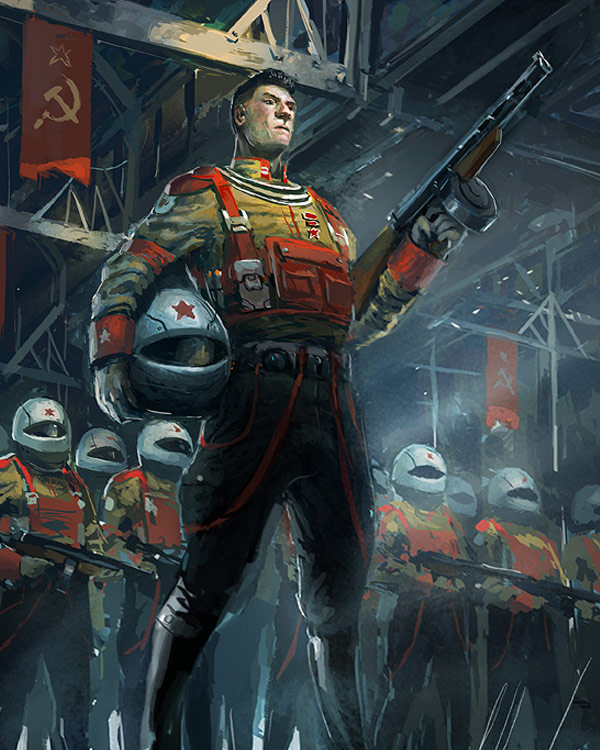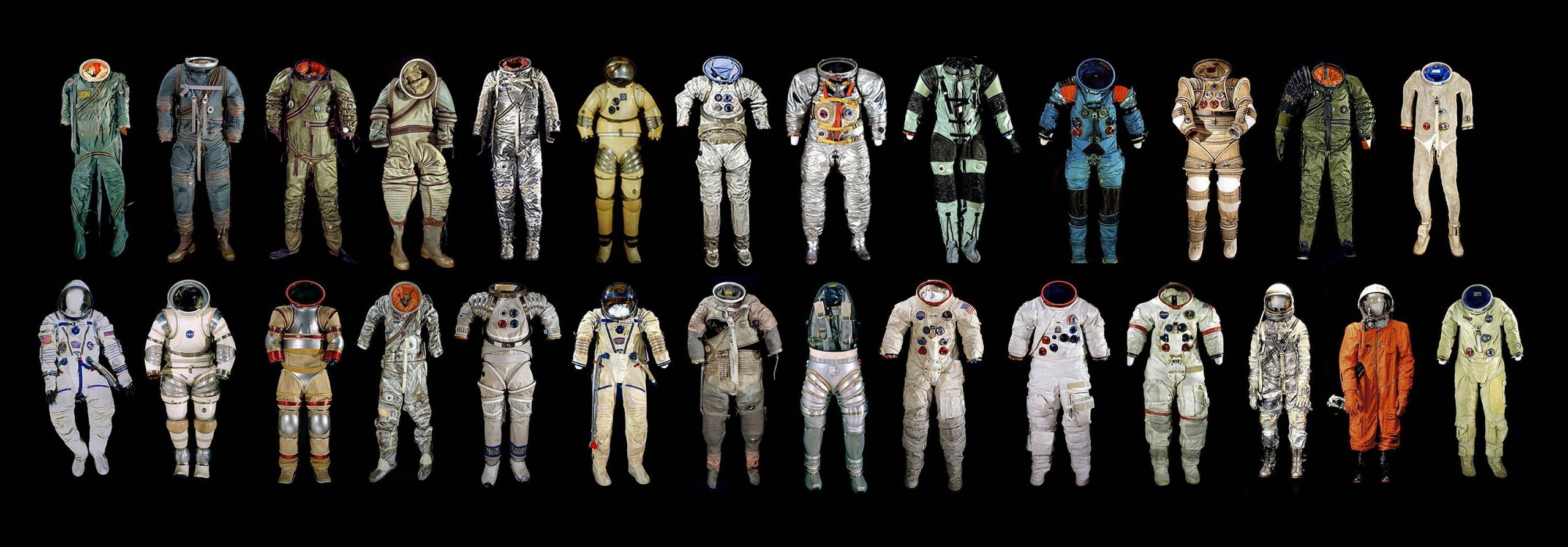Spacesuits from Around the World


Last time I dove into spacesuits I had a very US-centric approach, but here I will cover some interesting aspects of suits from around the world.
The new Russian Sokol-M suits for use in rocket flights up to the ISS have no option to pee out of it… which Russian cosmonauts are upset about because pissing on the tarmac is a good luck ritual. The design has a new zipper that doesn’t allow for male urination, but it also means the suit is airtight, allowing the Russians to ditch the rubber inner-suit. This saves time changing in and out of it, and it is more mobile (or it would be, if the suit wasn’t designed for optimal sitting comfort). Beneath it I have a science fiction image of Russian spacesuits, but I believe it is from the US (hence the innately evil look). Most of what I can find from international science fiction resembles closely to what US science fiction illuminates, which is that idea that it would be great to be able to operate in space exactly as we do on Earth without hindrance from bulky suits.

It is no shock to me that the Russians – humans just like us – are interested in the same improvements: making the “personal spaceships” their spacemen wear feel less like a spaceship. Increased mobility, comfort, and ease are the goals of spacesuit producers around the world. Creating a suit that allows humans to behave in space just as they would on Earth is the dream, which is also how most science fiction authors write people moving in space, whether it be Matt Damon’s Martian in his metallic suit or Harrison Ford’s Han Solo in a simple breathing apparatus (I know, two US examples).


The Russians also showed off in 2015 their new Orlan-MKS space suit:
I also found a Russian website that gives a mini picture tour of their spacesuit factory at Tomilino and its suit construction history:

Below is a Russian freelance design of a pressurized glove that launched his professional career after winning a NASA competition. This glove, with enhanced joint mobility, highlights the importance and desire of astronauts to function as they would on earth.



But then I also found that China has a history of simply using other nation’s suits, as well as reverse engineering the designs for their own production.
Here is a slideshow (kinda old fashioned website) depicting some major moments in Chinese suit creation.
But it doesn’t matter, because despite the space race’s early fierce competition, space has become a sort of haven for international relations. The challenges are so extreme it truly is an arena for human cooperation. It is a classic phenomena: rivals in one area become allies when faced with an opposition that typically resides further away. On Earth, the US and China are as far apart from each other as they can be, so they but heads on nearly every issue. Space is the place (Sun Ra reference?) that is far away enough away from both nations that proposes its own hardships that we can overcome together.
Here is yet another article reviewing the general pursuit for the best spacesuit.
Below is a picture (and link to a website) that claims to show and list the names of all spacesuits (USA and Russian) ever made:
















